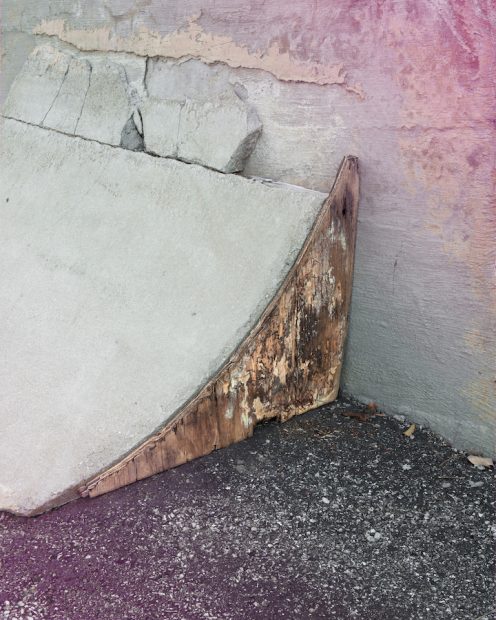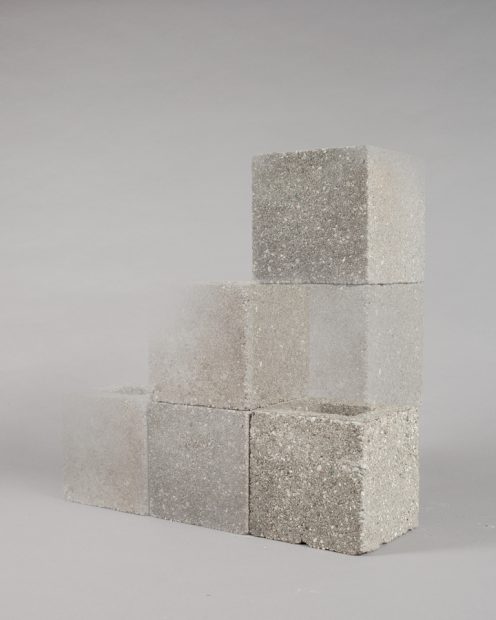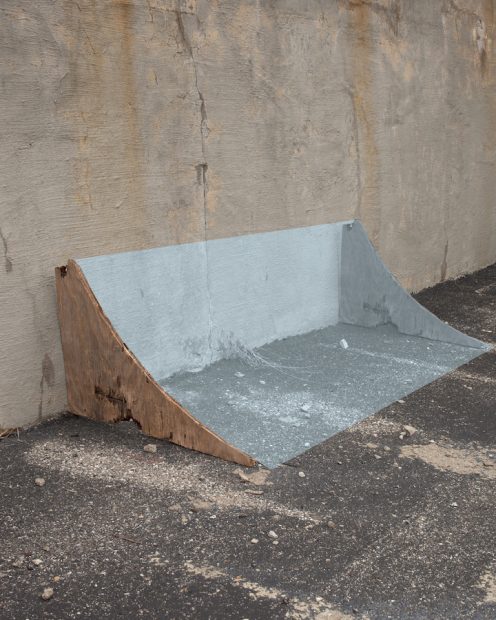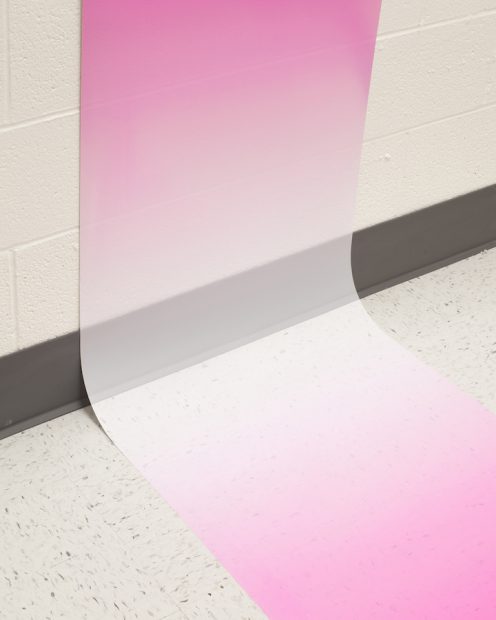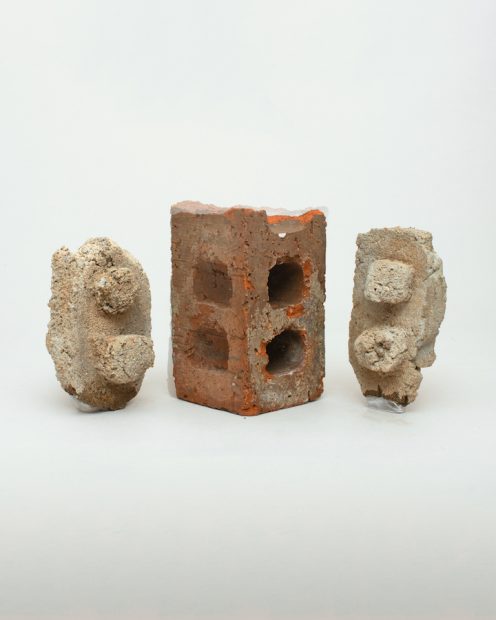Aaron Hegert’s show of photography, Transition, opened in the Martin McDonald Gallery at Louise Hopkins Underwood Center for the Arts in Lubbock last month. That space at LHUCA, while always in show rotation, is a transitional-feeling space in the building, a sort of hallway gallery, and a tricky spot for which to design a show because you have to confront works from the side first, and quite close-up. Consistency between works plays to an artist’s favor. So, as in this show’s case, small, equidistant 2-D works in a limited palette draw you in, like reading pages in a book.
Hegert’s work gives off a literary energy in any case, as a play on semiotics. As opposed to similar works in his art collective’s 2017 show Everything is Collective: A Concept is a Brick, these digitally augmented photographs are stripped down, with fewer signs and signals for the viewer. Some of them depict what read like skateboarding tweaks — cubes, ramps, rounded asphalt — subtle or sly additions to commercial-only public spaces. (A common strip-mall sighting: signs posted that warn off solicitors, loiterers, and skateboarders.)
The compositions throughout this small show focus in on areas that are presumably of concern for people like skateboarders (or sharp-eyed photographers): edges and corners of things, or overlaid and uneven asphalt. For a casual observer or pedestrian, the spaces Hegert calls into focus go unseen. Many of his photos have the same title, Transition, or Template, with a corresponding number or color — but again, this work visually functions like a language. The images are full of double entendres and poetics. They’re not your typical allegories, though, and I’ve been ruminating on them for a month. I suppose that as much as they feel like language, they also represent the glaring absence of it, like when the sound drops out of a dramatic scene in a movie. In this way, Hegert’s quiet is a forceful strategy for drawing attention.
Much of sexuality, religion, and a host of other power systems ending in “ism” have been driven by coded language and spaces. Subtle cues and omissions alert us to friend or foe, enemy or ally. In the age of the internet, this signaling takes up deeply layered and viral forms. What comes to mind in Hegert’s work are places where kids and teenagers form their identities, or involuntarily have them formed by others: a cafeteria, a park, a stairwell, an alley, a parking lot. A young body can either flow past, or stop and find haven, or break against the surface of them in a new way. And in Hegert’s work, as with many photographs, you are conscious of the photographer’s push-pull of both observing and engaging with his subject.
The show is subtle and clean, with a soft palette. Hegert’s work also has compositional cool; the overtones of play could drown out the serious undertones of body politics, but don’t. Hegert may deliver limited information, but not scope. His images’ ability to recede helps ferry nebulous concepts, such as the playground’s delicate phrases or micro-aggressions that crop up against any “other” in otherwise (seemingly) humdrum scenarios. His photos speak to the universal negotiations of everyday life, but given our specific moment, seem especially timely.
On view at the Louise Hopkins Underwood Center for the Arts, Lubbock, through June 1st, 2019.


